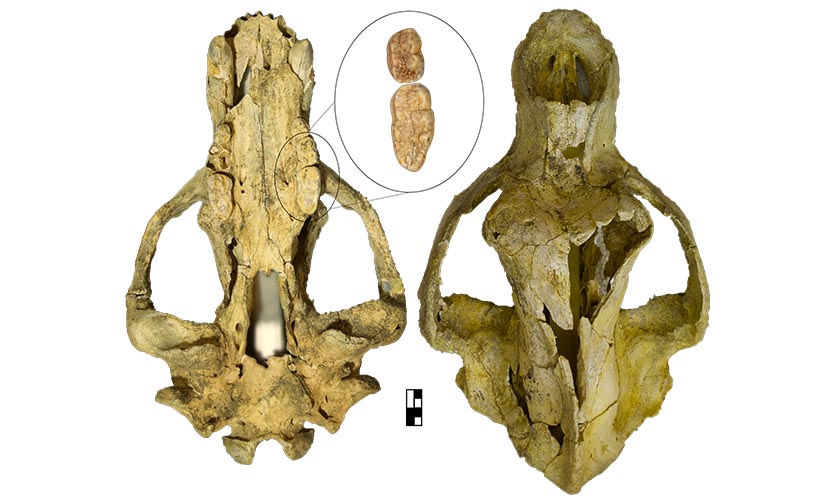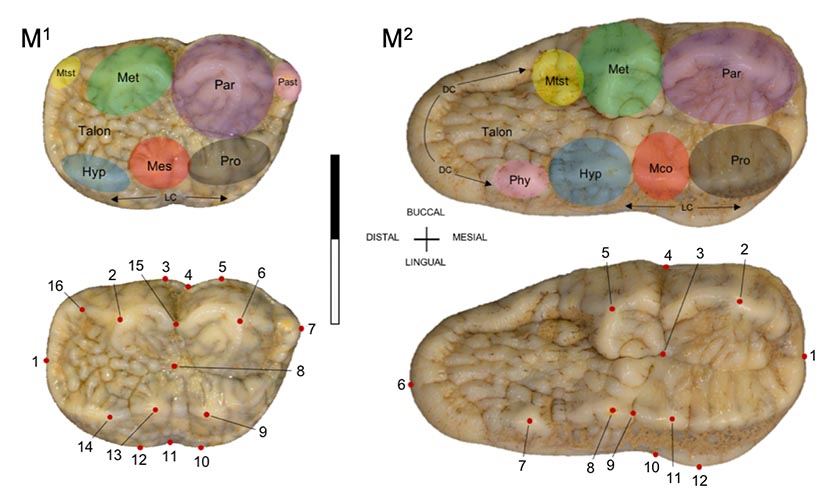Cave bears may have been adapting to survive the ice age

Recent research published in Quaternary Science Reviews on the long extinct cave bear (Ursus spelaeus) has found their attempt to adapt to the growing harshness of the last ice age before their extinction. These findings have also supported the theory of a completely plant based diet in these bears.
Daniel Charters and Dr Carlo Meloro of the Research Centre in Evolutionary Anthropology and Palaeoecology at Liverpool John Moores University along with researchers from the cave site of Scladina, Belgium, set out to investigate how cave bear bones (in particular their teeth) changed over time and what these changes can tell us about the ecology and environment of different periods throughout the last ice age.
Charters and Meloro studied teeth from cave bears between 40,000-150,000 years ago, excavated from sediments of Scladina cave. The different layered sediments in Scladina cave have been formed by different climatic events that cause the cave to fill with sediments and its associated finds. These can be dated to know an approximate age and order they were created.
By comparing size and shape of teeth between each time period group, it was established that cave bear teeth adapt to the availability of food sources as a result of fluctuations in environment and climate. Findings show that the M1 and M2 teeth studied (grinding teeth) were smaller when the climate was warmer, as a result of varying food choices and lush vegetation. However, in harsher steppic environments dominated by ice, the cave bears dentition became larger to produce a greater surface area to grind up harder food types, such as mast (limited availability of foods that can survive ice age conditions). This rapid change in climatic factors would prove extremely detrimental for a completely herbivorous species.

Left, (Above) Anatomical nomenclature for M1. (Below) Landmark configuration for M1. Right, (Above) Anatomical nomenclature for M2. (Below) Landmark configuration for M2.
Abbreviations are: Par = paracone, Met = metacone, Mtst = metastyle, Mes = mesocone (2nd (distal) protocone), Pro = protocone, Mco = metaconule (mesocone), Hyp = hypocone, Phy = post-hypocone, Past = parastyle, LC = lingual cingulum, DC = distal cingulum.
An example of climate affecting a strict diet animal is something seen in the present-day, one being the polar bear that is hypercarnivorous (only eating meat). They face heightening climatic pressures as ice sheets melt, reducing their hunting platforms and inevitably, the amount of food available to them.
However, in the article, it clearly demonstrates that cave bear tooth morphology changed in size and shape over a relatively short time period. This further suggests that cave bears were well equipped to cope with climatic changes and that perhaps other factors need to be considered to explain their extinction.
Daniel Charters said, “Research into the past is not only fascinating to rewrite what has once happened on our planet, but it is important for us to understand extinct animals so that we can take that information and apply it to animals of today. Climate has a huge impact on different species, we see this in palaeontology with the mass extinction during the last ice age. The speed that climate is changing in the current interglacial could see another mass extinction event like that of previous glacial periods. Studies into temporal evolution and adaptation could prove an invaluable key for the future conservation of animals on our planet.”


